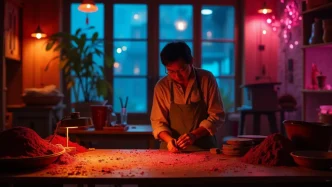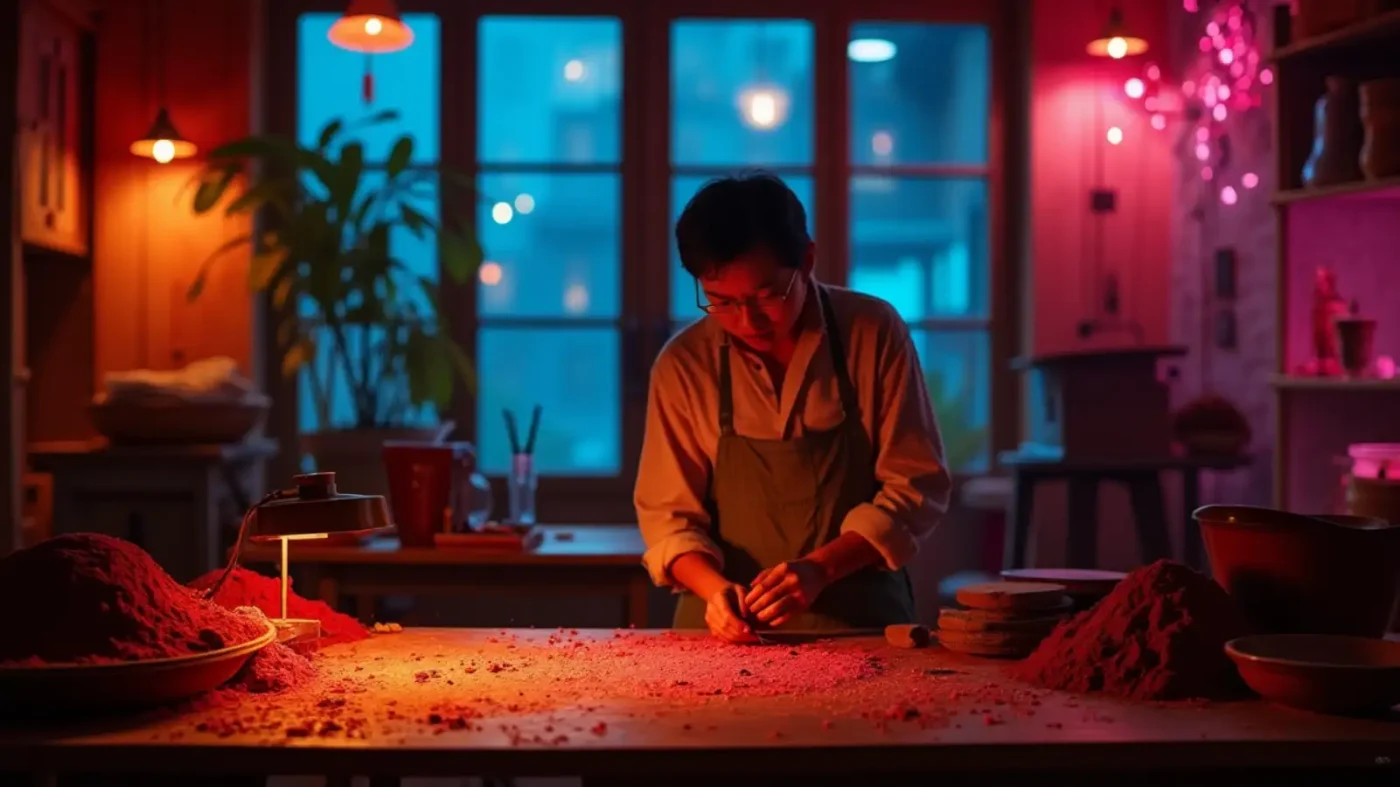In the bustling art hubs of Ha Noi and Ho Chi Minh City, a new generation of Vietnamese artists is making waves, blending traditional craftsmanship with contemporary flair. These young creatives, often in their 20s and 30s, are gaining international acclaim for their innovative works that draw on Vietnam’s rich cultural heritage while addressing modern themes. Their rise signals not only a personal triumph but also a broader resurgence of Vietnamese art on the global stage.
A Fusion of Tradition and Innovation
At the heart of this artistic movement is a deep respect for Vietnam’s historical art forms, such as lacquer painting and silk embroidery, combined with bold experimentation. Artists like Tran Minh Anh, a 28-year-old from Ha Noi, have reimagined traditional lacquer techniques to create striking installations that explore themes of urbanization and identity. Her recent piece, showcased at a gallery in Singapore, layers glossy lacquer over recycled materials, symbolizing the tension between Vietnam’s past and its rapid modernization.
“I want to preserve the techniques my grandparents taught me, but I also want to speak to my generation” said Tran Minh Anh during an interview with a regional art magazine. Her work has caught the eye of curators across Southeast Asia, earning her invitations to exhibit in Jakarta and Kuala Lumpur.
Similarly, in Ho Chi Minh City, artist Nguyen Bao Lam has gained attention for his digital art that incorporates motifs from Vietnamese folklore. His animated series, inspired by the legend of the Dragon King, merges hand-drawn elements with cutting-edge technology, appealing to younger audiences both locally and abroad. His work was recently featured in an online exhibition hosted by a European art platform, highlighting the global reach of these young talents.
Overcoming Challenges with Creativity
Despite their success, these artists face significant hurdles. Limited funding for the arts in Vietnam means many rely on personal savings or crowdfunding to support their projects. Art supplies, especially imported materials, can be costly—often priced at 500,000 Vietnamese Dong (US$20) or more for a single set of paints. Additionally, the lack of local galleries willing to take risks on unconventional works pushes many to seek opportunities overseas, a process that requires navigating complex visa regulations and language barriers.
Yet, these challenges have fostered resilience and resourcefulness. Many young artists have turned to social media platforms to build their audience, sharing time-lapse videos of their creative process or hosting virtual exhibitions. This digital savvy has not only helped them bypass traditional gatekeepers but also connected them with international collectors and collaborators.
A Cultural Renaissance with Global Impact
The rise of these artists coincides with a growing interest in Vietnamese culture worldwide. As Vietnam’s economy expands and its diaspora communities thrive, there’s a renewed curiosity about the country’s artistic contributions. Galleries in cities like Bangkok and Singapore are increasingly dedicating space to Vietnamese exhibitions, while online platforms make it easier for collectors in the US and Europe to discover emerging talents.
This cultural renaissance also carries a deeper significance. For many young artists, their work is a form of storytelling—a way to reclaim narratives about Vietnam that are often overshadowed by historical conflicts or economic stereotypes. By weaving personal and collective histories into their art, they offer a nuanced perspective that resonates with global audiences seeking authenticity in an era of mass production.
Community and Collaboration
Beyond individual achievements, a sense of community drives this movement. In Ha Noi, informal collectives have sprung up, where artists share studio space, critique each other’s work, and organize pop-up exhibitions in cafes and public parks. These grassroots efforts have created a supportive network, especially for those who lack formal training or institutional backing.
One such collective, based in Ho Chi Minh City, recently collaborated on a mural project that spans an entire alleyway in District 1. Depicting scenes of rural Vietnam alongside futuristic cityscapes, the mural has become a local landmark, drawing tourists and art enthusiasts alike. “We wanted to show that art isn’t just for galleries; it’s for everyone” said one of the project’s leaders, speaking to a local news outlet.
Looking Ahead
As these young Vietnamese artists continue to carve out space on the global stage, their influence is likely to grow. Upcoming international biennales and art fairs offer opportunities to showcase their work alongside established names, while partnerships with regional organizations could provide much-needed funding and mentorship.
For now, the streets of Ha Noi and Ho Chi Minh City remain their greatest canvas, where every brushstroke and pixel tells a story of resilience, heritage, and hope. Their golden touch is not just transforming Vietnam’s art scene—it’s inviting the world to see the country through fresh, vibrant eyes.













